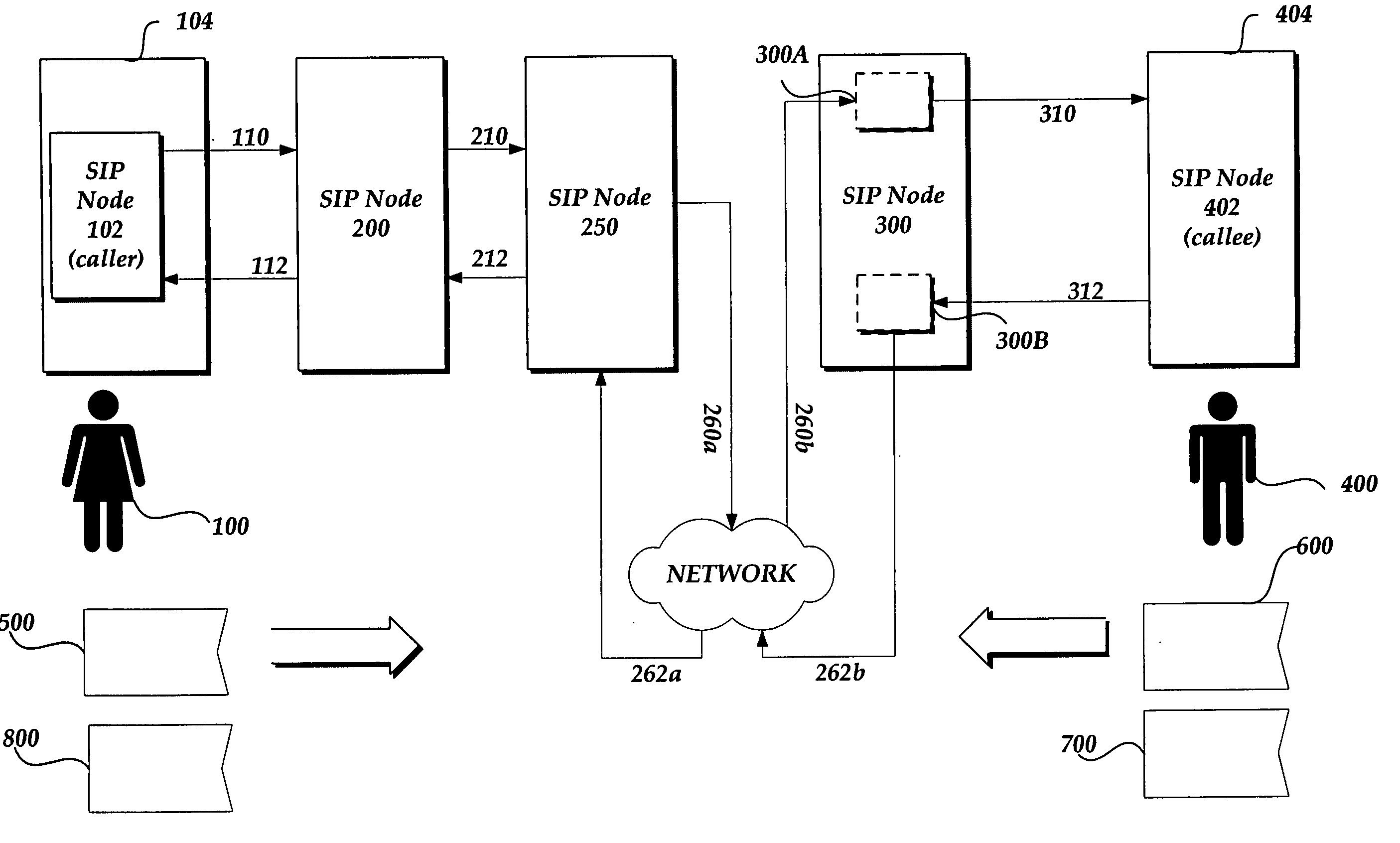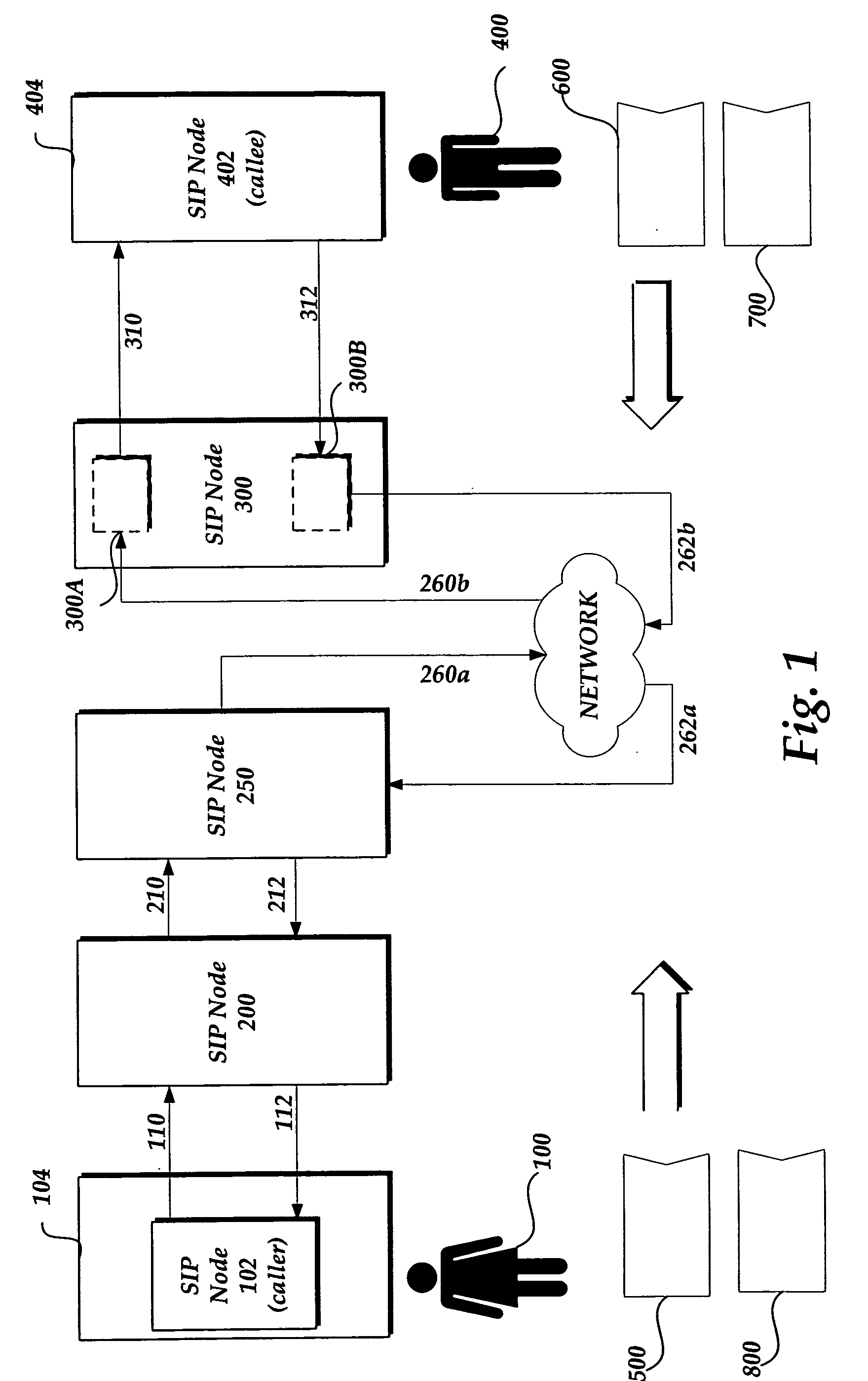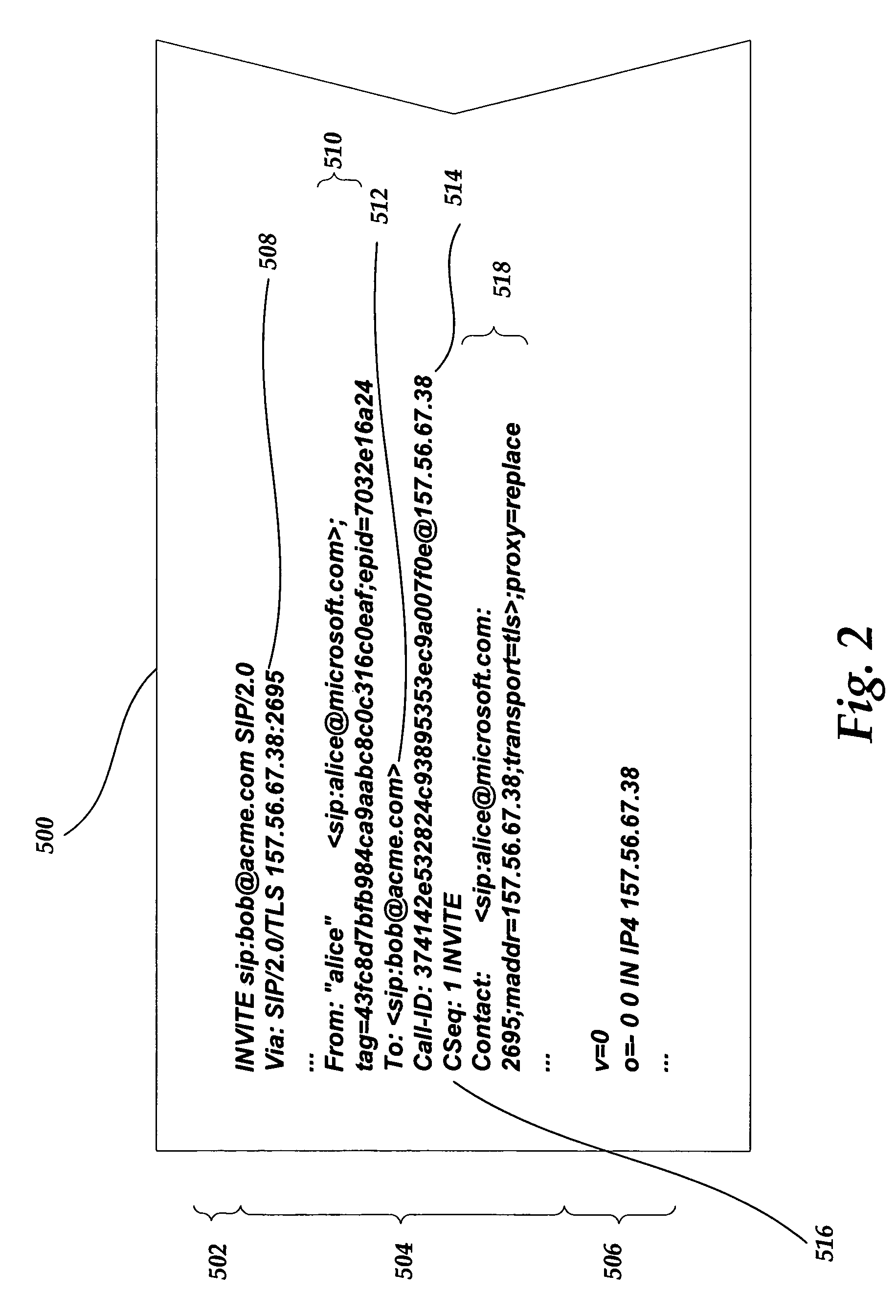Signing and validating Session Initiation Protocol routing headers
a protocol and header technology, applied in the field of method and computer readable medium, can solve the problems of denying legitimate users access to resources, many of these headers are not secure when used,
- Summary
- Abstract
- Description
- Claims
- Application Information
AI Technical Summary
Benefits of technology
Problems solved by technology
Method used
Image
Examples
Embodiment Construction
[0026] Denial of service attacks are typically computerized assaults launched by attackers to overload or halt network services, such as Web servers or file servers. For example, an attack may cause the server to become so busy attempting to respond to counterfeit messages that it ignores legitimate requests for connections. Alternatively, the routing of legitimate messages may be corrupted and cause SIP nodes to forward responses incorrectly. In some cases, the communication protocol used to transmit the messages across a computer network may be a significant point of attack. For example, as noted above, counterfeit SIP messages may be sent with forged VIA headers, ROUTE headers, and / or RECORD-ROUTE headers, thus directing messages to victim SIP nodes and / or masking the identity and source of the attacker. To reduce these denial of service attacks, the routing instructions and actual routing path contained in the SIP headers may be validated to ensure their integrity.
[0027]FIG. 1 ...
PUM
| Property | Measurement | Unit |
|---|---|---|
| length of time | aaaaa | aaaaa |
| time | aaaaa | aaaaa |
| data structure | aaaaa | aaaaa |
Abstract
Description
Claims
Application Information
 Login to View More
Login to View More - R&D
- Intellectual Property
- Life Sciences
- Materials
- Tech Scout
- Unparalleled Data Quality
- Higher Quality Content
- 60% Fewer Hallucinations
Browse by: Latest US Patents, China's latest patents, Technical Efficacy Thesaurus, Application Domain, Technology Topic, Popular Technical Reports.
© 2025 PatSnap. All rights reserved.Legal|Privacy policy|Modern Slavery Act Transparency Statement|Sitemap|About US| Contact US: help@patsnap.com



